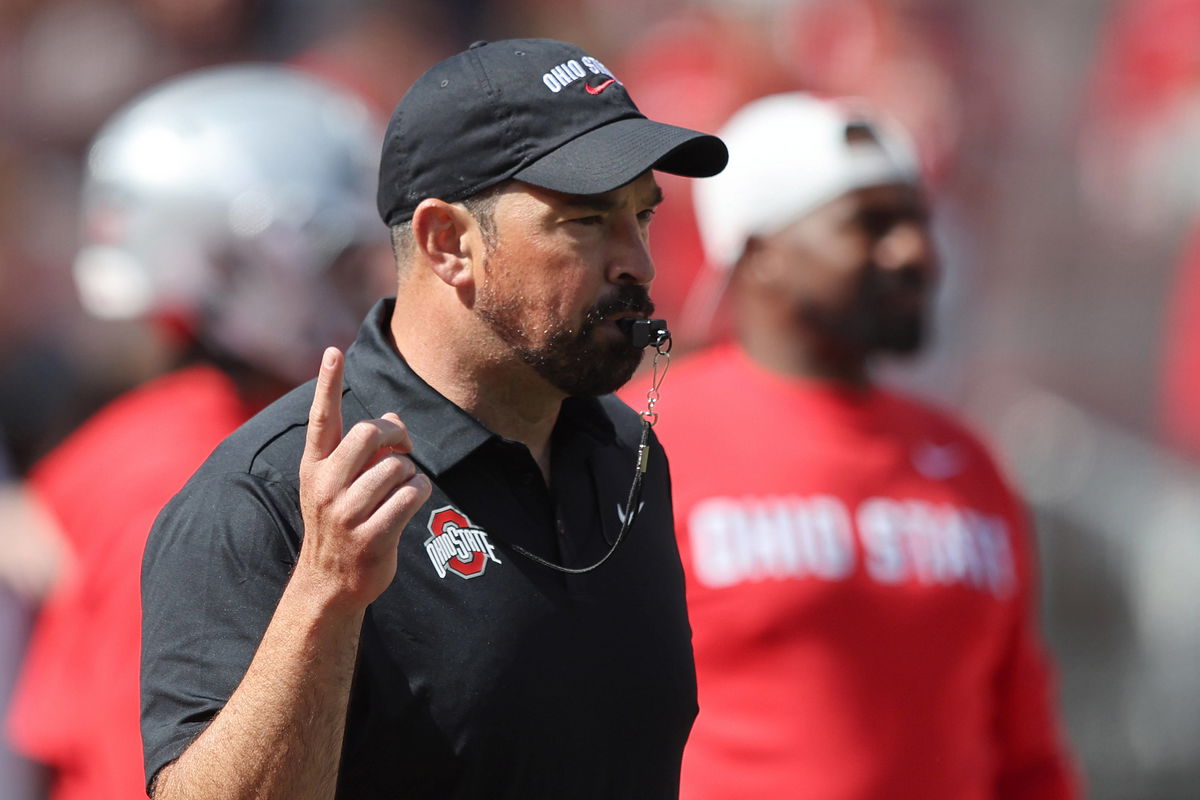
Imago
Ohio State Buckeyes head coach Ryan Day gestures during team warm ups prior to the Buckeyes game against the Texas Longhorns in Columbus, Ohio on Saturday, August 30, 2025. PUBLICATIONxINxGERxSUIxAUTxHUNxONLY COL20250830112 AaronxJosefczyk

Imago
Ohio State Buckeyes head coach Ryan Day gestures during team warm ups prior to the Buckeyes game against the Texas Longhorns in Columbus, Ohio on Saturday, August 30, 2025. PUBLICATIONxINxGERxSUIxAUTxHUNxONLY COL20250830112 AaronxJosefczyk
Over the years, college football has adapted with the times, bending the playbook to fit the realities of modern athletes. One such change is the ‘Redshirts rule,’ which preserves a year of their eligibility. Decades ago, sitting out a season was a rite of passage. However, it’s a luxury that only a few can afford today. Among the voices yearning for help, Ryan Day remains at the top.
Watch What’s Trending Now!
The redshirt rule indicates that a student-athlete can sit out of competitive games for a full season while staying intact with the team, attending classes, and continuing to train. It voices the problem coaches and players face while choosing when to burn or preserve their redshirt year. The current 4 seasons in 5 years system demands updation. In the last years, many athletes benefited from the free COVID year, but those players have graduated. Many head coaches have been calling for a 5-in-5 system. Five years, five seasons, and no redshirts. However, the NCAA, already under the radar, provides no clarity on the matter.
According to a tweet by Ohio State insider Patrick Murphy, “Ryan Day admitted that it’s ‘difficult’ when discussing redshirts with players not knowing if the NCAA is going to allow players to play five years. He said that has an impact on travel rosters.” The #1 Buckeyes regularly compete for the championship. Ryan Day’s comments represent the voice of each coach and player competing on the field. While the rule is essential in player development and growth, it creates confusion and roster selection issues.
ADVERTISEMENT
Ryan Day admitted that it’s “difficult” when discussing redshirts with players not knowing if the NCAA is going to allow players play five years. He said that has an impact on travel rosters.
— Patrick Murphy (@_Pat_Murphy) October 9, 2025
A change in the existing rule would aid teams like Ohio State in ensuring better workload and injury management. For many of these athletes, college football is the stage where their dreams meet the lights. Only a handful of them get to the next level, the NFL. A freak injury after the fifth game wastes a year – something that could be taken off the board with a rule change.
The travel rosters of teams like Ohio State, which plays a high-intensity game, reflect this conundrum. Day often leaves crucial backups at home to protect redshirt status, even when depth is required. With difficult rivals, such as their upcoming match against Illinois, a single injury could significantly impact the Buckeyes’ performance away from home. Hence, it potentially pushes their resources beyond their limits. The game has become demanding; the NCAA should follow suit to maintain balance.
ADVERTISEMENT
The rule change would also see players get prolonged and better NIL deals, increasing the brand values of teams like Ohio State, which leverage these deals to get better players. It would raise the player’s profile and bring in sponsors while letting the fans cheer for their favorite athlete for another year. All while optimizing the scholarships these institutions give, as the Buckeyes present around 85 annually. It would maximize the players’ worth and help the school manifold. Yet, with all the potential troubles off the gridiron, the Buckeyes have certainly taken it up a notch on the ground.
ADVERTISEMENT
Ohio State’s dominance continues
Ryan Day’s Ohio boasts a marauding offense led by QB Julian Sayin, with a 197.0 passer rating and an 80.2% completion percentage. He has thrown for 1,313 yards and 13 touchdowns against three interceptions. Jeremiah Smith and Carnell Tate supported both WRs with almost 900 receiving yards between them. It’s certainly a well-oiled machine.
The rule change would go a long way toward maintaining the same intensity with which they are playing, along with an impenetrable defense that has allowed just 5.0 points per game so far. Through seven games, Ohio State has averaged 48 points per contest while ranking tied for third nationally in scoring defense. Freshmen and backups have combined for over 300 snaps in mop-up duty, contributing three touchdowns and two key fourth-quarter stops.
Yet Day has held back two offensive linemen and a defensive back to preserve their redshirts. Each decision carries significant weight for the Buckeyes’ title aspirations.
ADVERTISEMENT
ADVERTISEMENT
ADVERTISEMENT
ADVERTISEMENT

